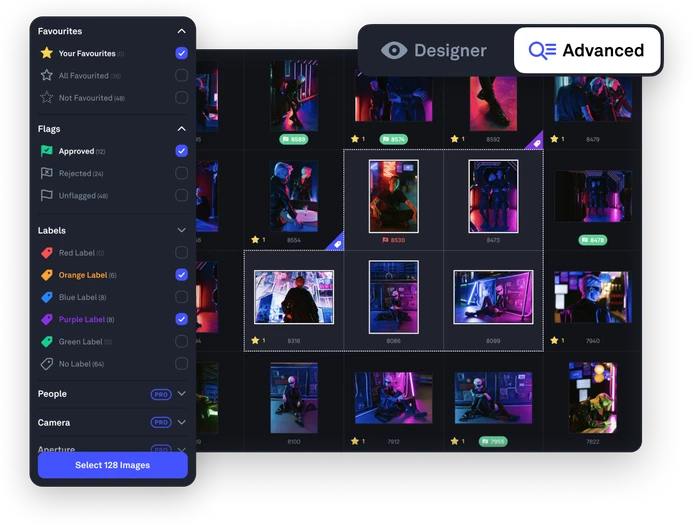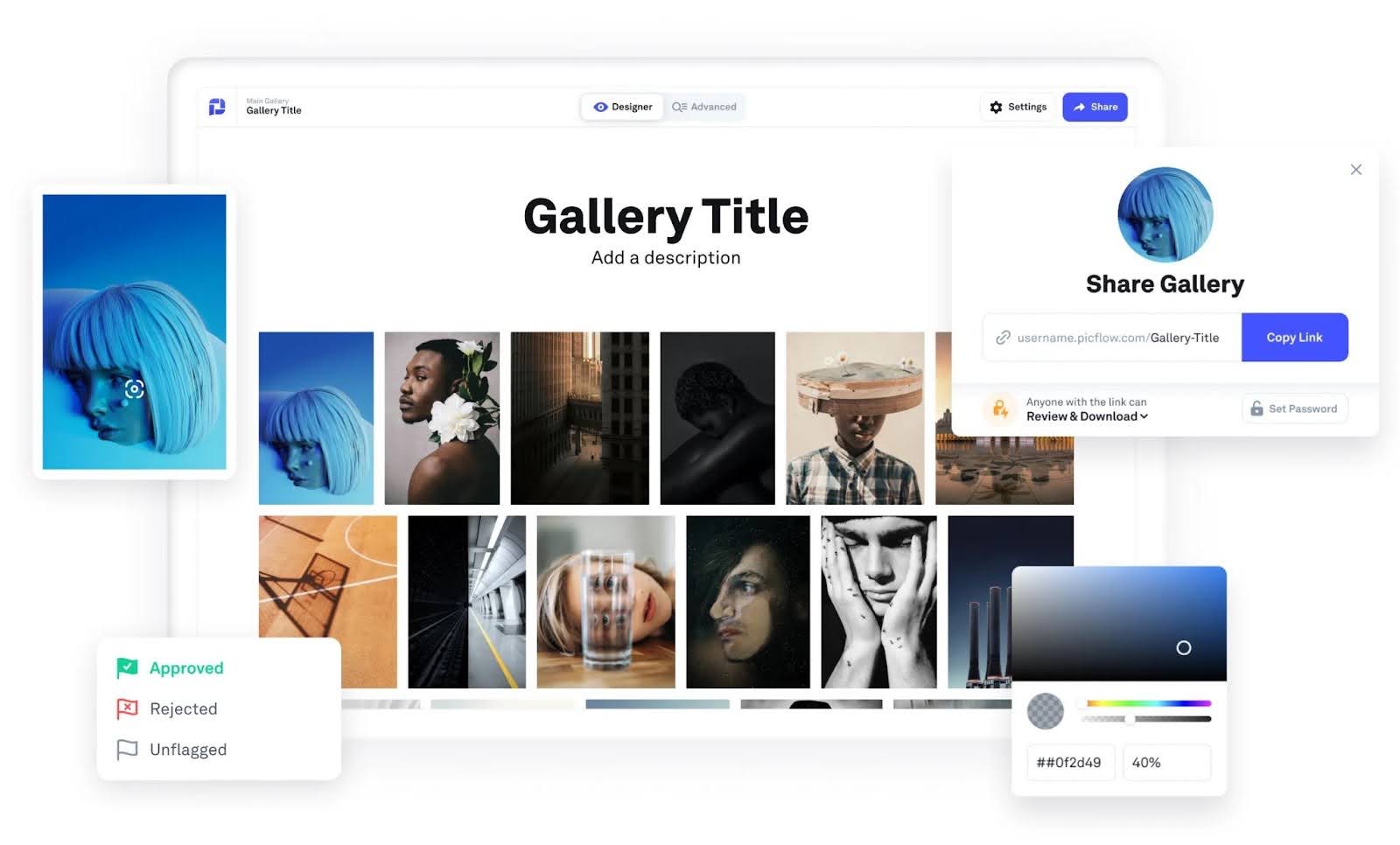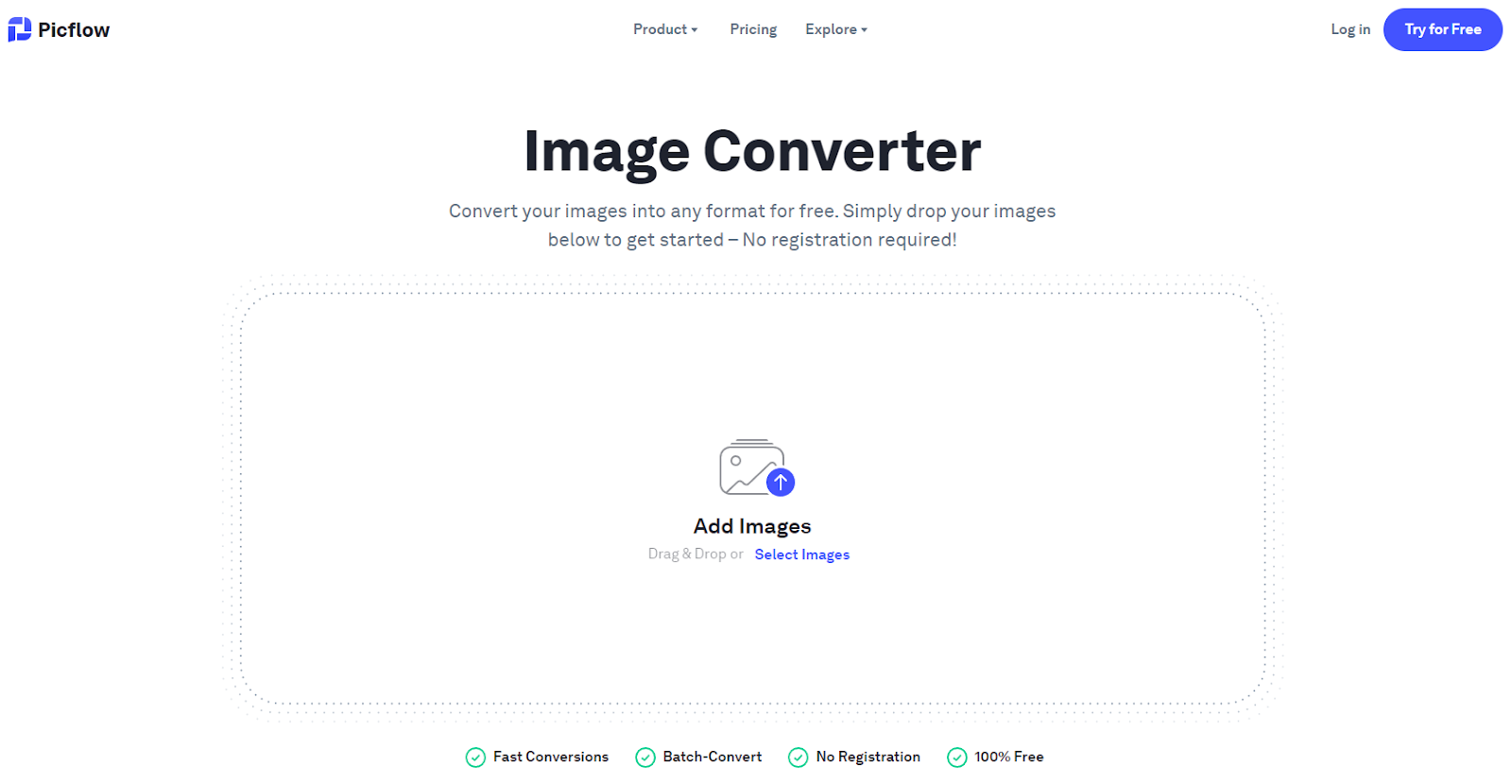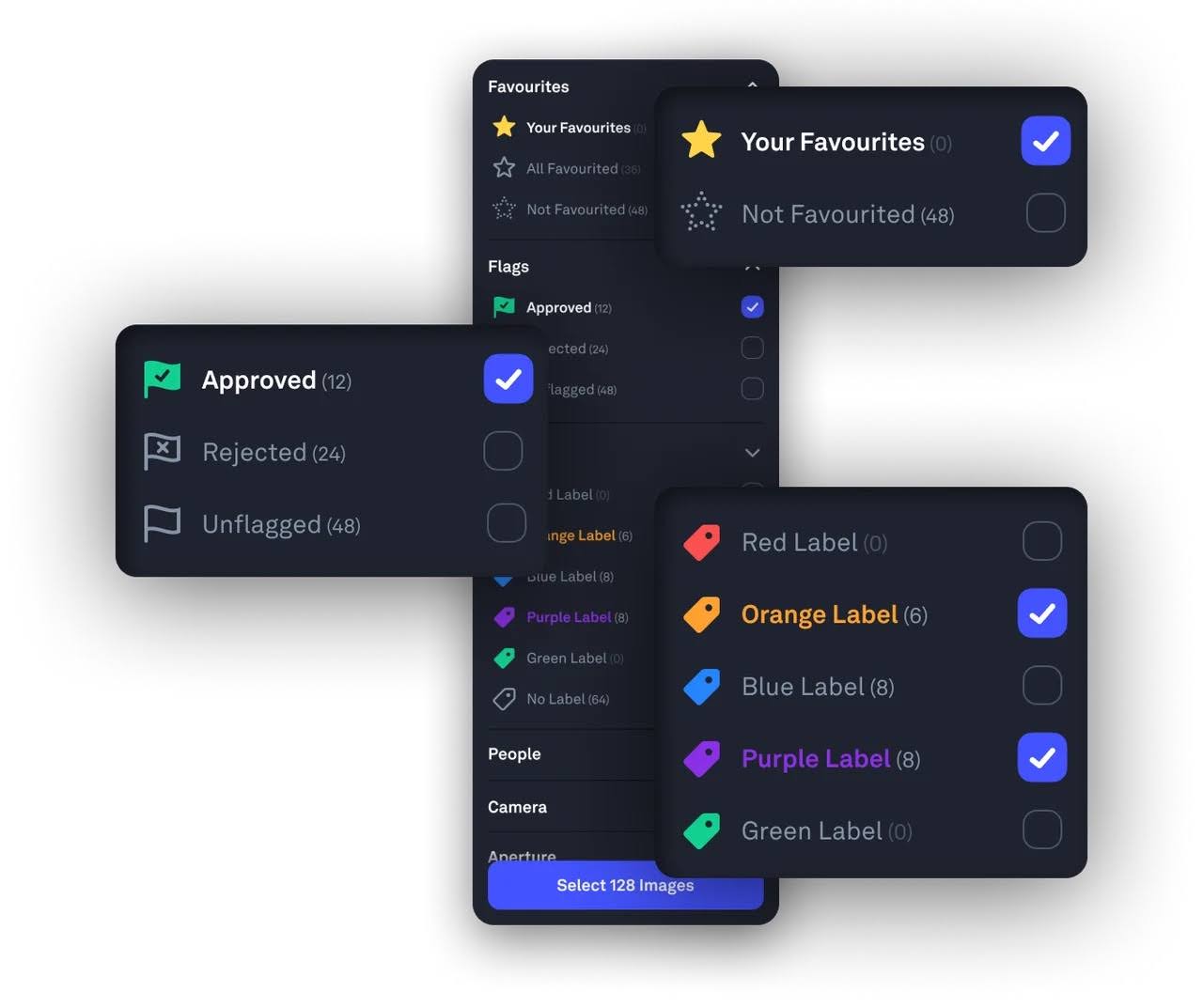How to Improve Workflows with Digital Asset Management Metadata
If managing your creative files still feels chaotic, metadata might be the missing piece. With the right metadata strategy, your team can find assets faster, keep files organized, and streamline feedback across every project.
)
Quick Summary
This article explores how creative teams can use metadata to improve digital asset management. We’ll cover key metadata practices, show how they reduce friction in workflows, and explain how platforms like Picflow make it easier to manage, tag, and deliver assets with confidence. Visit the Picflow blog to discover more ways to improve your creative workflows.
Struggling to Keep Your Creative Assets Organized?
As teams grow and projects scale, creative files can quickly become disorganized. Without a system in place, it’s easy to lose track of versions, miss key feedback, or spend too much time searching for the right asset. That’s where metadata comes in; it adds structure, context, and consistency to every file.
By using metadata strategically, you reduce confusion, speed up collaboration, and make assets easier to manage and deliver. It’s one of the simplest ways to bring order to your workflow and help your team stay focused on the creative work that matters.
In this Picflow guide, we’ll show you how to use metadata to manage your digital assets more effectively.
Why Listen to Us
At Picflow, we understand that managing digital assets isn’t just about storage; it’s about staying organized and working faster. We’ve helped lots of creative professionals simplify how they tag, share, and deliver content. That’s why Picflow is built to make metadata management intuitive, collaboration smoother, and creative workflows more efficient from start to finish.

What is Digital Asset Management Metadata?
Digital asset management metadata is the information attached to your digital asset that helps you manage, organize, and find it easily. It includes details like the file name, author, creation date, project title, and usage rights.
For example, if you upload a set of shoe photos for a client, the metadata can include the client’s name, the campaign title, product category, and usage rights. Later, you can search for “Spring 2025 Acme Shoes” and quickly find the right files without sorting through folders manually.
There are four key types of metadata, and they serve different purposes:
Descriptive Metadata: Includes titles, captions, tags, keywords, and author names. It helps identify and group files based on content.
Administrative Metadata: Contains information about file ownership, usage permissions, and licensing. It supports compliance and rights management.
Technical Metadata: Covers file properties such as dimensions, resolution, file format, compression type, and camera settings.
Rights Metadata: Provides legal details on how a file can be used, shared, or modified.
Why Metadata Matters in Digital Asset Management
Organizing Assets: Metadata lets you group files by type, date, client, or project. This is especially useful when managing large or fast-growing libraries.
Managing Rights and Usage: Licensing info can be stored directly in the metadata, ensuring files are only used in approved ways.
Streamlining Search: You can quickly find files using keywords, tags, or custom fields, no need to dig through folders manually.
Tracking File Status: Use metadata to mark files as “In Progress,” “Needs Review,” or “Final.” This helps everyone stay on the same page.
Speeding Up Delivery: Files with proper metadata are easier to hand off, and recipients know exactly what each file is for and how to use it.
How to Use Metadata to Improve Digital Asset Management
1. Streamline Search with Smart Filtering
Using metadata to filter assets can significantly speed up your workflow and ensure you’re always working with the right files. You can easily categorize and search through your content, saving valuable time that would otherwise be spent searching for files.
Picflow’s Workflow Mode enhances this process by allowing you to filter images and videos based on metadata points, such as favorites, client feedback, flags, color labels, and annotations. This makes bulk actions like organizing, reviewing, or exporting files seamless and efficient.

To use metadata filtering effectively:
Tag assets with relevant metadata such as keywords, project names, and categories to make filtering more accurate.
Use metadata fields to group assets by type, content, or usage, ensuring each asset is easy to locate.
Apply filtering tools in your digital asset management system to quickly narrow down search results based on metadata tags and categories.
2. Create Context-Rich Branded Galleries
Presenting your work with context and clarity is important in digital asset management, and branded galleries with embedded metadata do just that. These galleries not only provide visual appeal but also offer valuable context, making it easier for teams and clients to understand and interact with your assets.
To create effective, context-rich client galleries:
Display essential metadata like file names, captions, usage rights, and approval status alongside assets to ensure all relevant information is visible.
Minimize client confusion by clearly labeling assets, showing which versions are approved, and providing all necessary details in one place.
Prevent unauthorized use by highlighting usage rights and restrictions within the gallery.
Picflow’s Gallery Designer allows you to create custom layouts that showcase your assets while displaying relevant metadata for both internal and client use. Whether you need to separate photos by day or location during a shoot, or highlight key deliverables, Picflow’s customizable features ensure your galleries are both aesthetic and informative.

3. Seamlessly Manage Diverse File Types
As a creative, you often work with a mix of images, videos, design files, and documents. Managing these file types can be challenging, especially when each format comes with its own set of technical requirements. Maintaining consistency in how these diverse file types are organized and accessed is key to maintaining an efficient workflow.
To manage diverse file types effectively:
Preserve metadata across different file formats to ensure consistent organization, no matter what type of asset you’re working with.
Enable smooth collaboration by ensuring teams can access important metadata, regardless of the file type they’re using.
Maintain workflow continuity from the initial creative stages to final delivery, without losing critical information in the process.
Picflow’s Image Converter tool allows you to convert assets into different file formats without losing metadata. Unlike many tools that strip metadata during conversion, Picflow ensures that copyright details, keywords, and usage instructions remain intact.

4. Turn Client Feedback into Actionable Metadata
One of the biggest frustrations for creative professionals is dealing with messy feedback, whether it's scattered email threads, vague comments, or repeated revisions. Metadata offers a way to clean up this process, ensuring feedback is clear, organized, and actionable.
Since creative projects rely heavily on collaboration and feedback, capturing feedback as metadata transforms project management in the following ways:
Stores comments, annotations, and flags directly within the asset data
Allows filtering by approval status and revision priority for quick access
Reduces confusion by centralizing feedback and eliminating scattered emails and notes
Speeds up the proofing and approval process by having all feedback in one place
When feedback is tied to specific metadata (like image tags, timestamps, or client folders), everyone involved can quickly understand the asset’s status, what’s approved, and what needs revisions.
Picflow’s Client Review feature simplifies this process. Clients can leave comments, use color-coded labels to categorize assets and annotate directly on images. Every action and tag generates metadata, which becomes instantly usable by your team. It’s like turning client feedback into structured data, helping to streamline the next steps in the creative process.

5. Save Time with Fast, Metadata-Indexed Uploads
Without metadata indexing, assets might need to be manually sorted and tagged after uploading, which can take up precious time that could be spent on creative work.
When metadata is indexed during the upload process, it allows teams to instantly search, filter, and access the files they need based on predefined tags, keywords, or categories. This means no more wasting time sifting through folders or wondering which version is the most current.
Here's why metadata indexing matters:
Eliminates manual re-tagging after each upload, saving time and effort.
Accelerates proofing, tagging, and publishing workflows, streamlining the entire process.
Reduces downtime and minimizes errors by automating tagging and organization.
Waiting for uploads can disrupt your workflow, but Picflow’s Fast Uploader eliminates this issue by automatically indexing embedded metadata as you upload high-resolution files at full speed. This means your gallery is instantly organized and searchable, with zero manual re-tagging required.
6. Protect Your Work with Metadata-Driven Security
Protecting creative work is important, especially when dealing with sensitive client assets. Metadata-driven security helps you safeguard your files by tracking who has accessed or downloaded them.
Here’s how it helps:
Enforces permissions such as password protection and download restrictions to maintain security.
Helps comply with licensing agreements and copyright laws by monitoring usage.
Builds client confidence with transparent tracking of asset usage.
With Picflow, you can create asset share links that are password-protected, restrict downloads, and set expiration dates on share links, all while keeping metadata intact.
7. Image Transfer and Download Controls
In creative workflows, managing how assets are shared and downloaded helps you maintain accuracy, security, and efficiency. Without proper controls, there’s a risk of sending outdated versions, unauthorized access, or losing important context, like licensing or usage rights.
Implementing image transfer and download controls helps ensure that the right people get the right assets at the right time, with all relevant information intact.
This matters because it:
Adds context: Clients receive clear information on what they’re getting and how to use it, including rights, usage, and version details.
Reduces mistakes: With version control and metadata, there’s no more confusion between draft and final assets.
Saves time: Metadata eliminates the need for follow-up emails or manual reattachment of rights and context after exporting files.
With this, you spend less time clarifying details and more time focusing on creating, while your clients receive everything they need the moment they download the asset.
Best Practices for Managing Digital Assets with Metadata
Use Consistent Naming Conventions: Create file names that include essential details like project name, version, date, and key terms. For example, "Acme_SummerCampaign_2025_V1.jpg" ensures files are easily searchable and organized.
Tag Assets with Relevant Metadata: Add descriptive tags, keywords, and categories to every asset. This improves searchability and ensures assets are easy to find, whether you’re sorting by content type, project, or usage.
Establish Standardized Metadata Fields: Define key metadata fields such as title, description, copyright, usage rights, and creation date that your team uses regularly. This ensures consistency across all assets.
Automate Metadata Entry Where Possible: Use tools to automatically capture metadata such as file type, resolution, and author during upload. This reduces manual entry and ensures all relevant information is included.
Use Controlled Vocabularies and Taxonomies: Implement a controlled set of keywords and categories for consistent tagging. This prevents confusion and ensures everyone uses the same terms, improving asset retrieval and organization.
Regularly Update and Audit Metadata: Periodically review and update the metadata to ensure accuracy and relevance. Outdated or incorrect metadata can make assets harder to find and cause inefficiencies.
Link Metadata to Version Control: Ensure that every version of an asset is linked to metadata that clearly indicates whether it’s a draft, final version, or approved for use. This helps prevent confusion and ensures teams are using the correct version.
Improve Your Digital Asset Management Workflow With Picflow
Digital asset management is seamless when files are organized, labeled correctly, and easy to access. Metadata makes this possible by adding context to every file, helping teams find, understand, and use assets without confusion or delays.
Picflow makes this process simple by giving you simple tools to add tags, track versions, and control access, so your assets stay organized. Whether you’re sharing final images or collaborating on edits, Picflow offers seamless gallery and digital asset management tools that support your workflow.
Get more control over your digital assets. Try Picflow for free today.
)